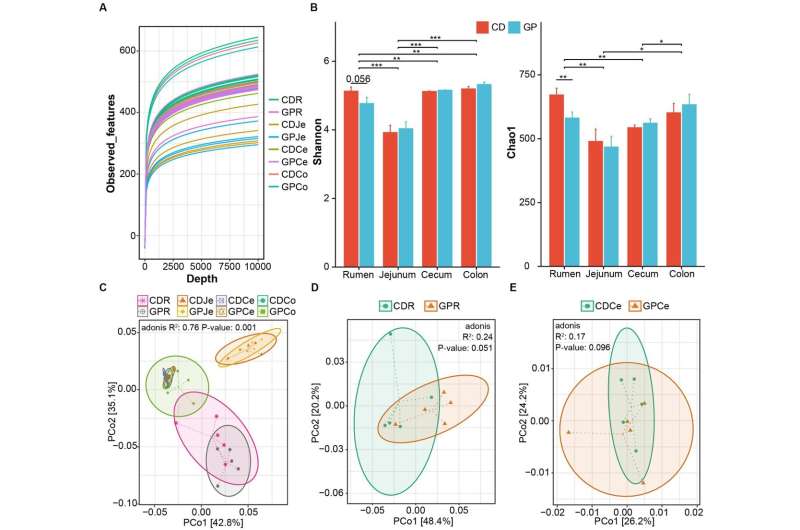This article has been reviewed according to Science X's editorial process and policies. Editors have highlighted the following attributes while ensuring the content's credibility:
fact-checked
peer-reviewed publication
trusted source
proofread
Scientists study the effect of grape pomace on the digestive tract microbiota of herbivores

During the grape juice extraction and winemaking process, a significant amount of residue, which accounts for 20%–25% of the fresh grape weight, is generated.
Using these by-products as animal feed ingredients not only reduces environmental pollution but also creates favorable economic and ecological benefits through nutrient cycling and resource recycling. However, the role of grape pomace (GP) in shaping the gastrointestinal tract microbiota of sheep remains unclear.
Recently, researchers from the Northwest Institute of Eco-Environment and Resources of the Chinese Academy of Sciences (CAS), in collaboration with colleagues from Ningxia University, selected Tan lambs and wine grape pomace to measure growth performance and conducted 16S rRNA gene sequencing to analyze the composition and function of bacteria and archaea in rumen, jejunum, cecum and colon.
The study was published in Frontiers in Microbiology on Sept. 28.
The researchers randomly designed a control diet fed with a basal diet and the experimental group was fed a diet containing 8% grape pomace for 46 days.
Results showed that grape pomace enhanced the abundance of Prevotella 1, Ruminococcus 2, and Sharpea, while decreasing the acetate-producing Ruminococcaceae and methane-producing Methanobrevibacter in the gastrointestinal tract of Tan lambs.
Adding 8% grape pomace to the feed did not affect the growth performance of Tan lambs, but promoted propionic acid metabolism, starch degradation, intestinal amino acid biosynthesis, rumen B-vitamins biosynthesis and reduced methane production by changing gastrointestinal microbiota.
"Our study provides a theoretical basis for further understanding the mechanism of grape pomace, the development and rational utilization of feed resources, as well as the reduction of methane emissions in animal husbandry," said Yang Guo from NIEER, corresponding author of the study.
More information: Xindong Cheng et al, Effect of grape pomace supplement on growth performance, gastrointestinal microbiota, and methane production in Tan lambs, Frontiers in Microbiology (2023). DOI: 10.3389/fmicb.2023.1264840
Journal information: Frontiers in Microbiology
Provided by Chinese Academy of Sciences



















